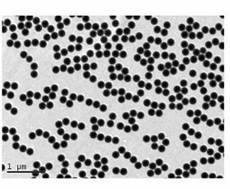Introduction
There is a wide range of man-made particles and an even wider range of particles that can be found in nature. While quantum mechanics or even more complex theories are required to explain elementary particles such as neutrons, electromagnetic theory, and classic mechanical physics are typically sufficient to explain the fundamental behavior of particles larger than 1 nm. This does not mean that the behavior of such particles could easily be predicted. Scientists continue to encounter unexpected and sometimes dazzling behavior of particles on a nearly daily basis, as the huge number of scientific publications in this field can verify.
While the public perception often focuses on the latest breakthrough in elementary particle science, it is probably far more important for mankind to understand the science of particles larger than 1 nm than to understand the physics of a quark or the Higgs boson. Such elementary particles have little impact on our environment or daily life that we could influence. Here we will thus only consider particles larger than 1 nm.
Particles, bubbles, and droplets
Particles do not necessarily have to be solid. They could be liquid, such as an oil droplet in an emulsion or even gaseous (bubbles). They could be integrated into a solid (such as clay particles in cement), in a liquid (such as particles in paint), or in a gas (such as aerosols).
Nanoparticles and Microparticles
There are two main size regimes by which scientists classify particles. Any particle smaller than 1 micron should be called a nanoparticle, while any particle larger than 1 micron, but smaller than 1 mm should be called a microparticle. Both nanoparticles and microparticles are often called colloids.
Measuring Particles
Since there are many different particles stretching over a wide range of sizes there is also a huge range of instruments to measure them. A full particle characterization might require several instruments based on different techniques. The most common characteristic of a particle is:
Size (hydrodynamic radius or radius of gyration)
- Weight (molecular weight)
- Shape (form or structure factor)
- Charge (Zeta potential)

Some typical nanoparticles:
monodisperse Latex particles
